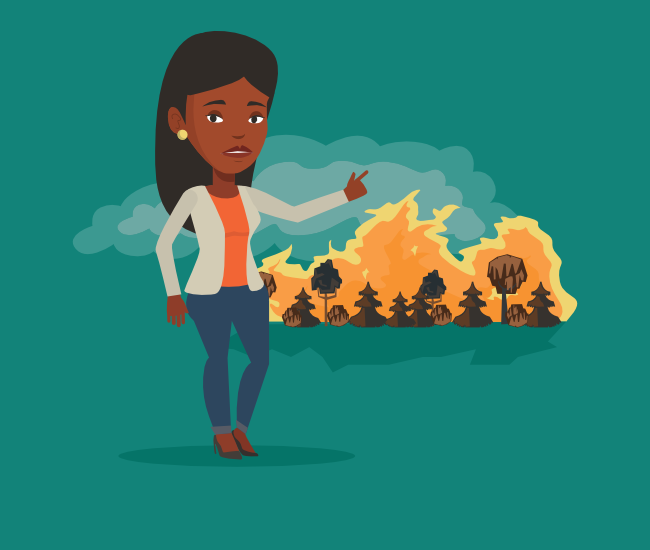Most people know the importance of administering CPR when a person is not breathing or when their heart has stopped. But are there situations when you do not perform CPR? In other words, in what scenarios is performing CPR ineffective, discouraged, or likely to cause more harm than good?
While it’s critical to begin CPR as soon as you determine that it is what a person needs, there are some situations where CPR is unnecessary — or worse, unsafe. Always prioritize safety, and do not attempt CPR if it would endanger you to do so.
Additionally, some emergencies may not call for CPR at all. Instead, the person may need some other kind of assistance or medical care. In such cases, performing CPR may waste time or even cause their condition to worsen.
Here are five situations when you should not perform CPR, and what to do instead.
There Is a Valid DNR Order
One instance when you should not attempt CPR is when a valid Do Not Resuscitate (DNR) order is in place. This means the person has a written order from their doctor stating they do not wish to receive CPR if their heart and breathing stop. . The person may have a bracelet, card, or other documents to show that they have a DNR in place.
However, if you find a DNR, make sure it’s complete and valid. If it looks incomplete, or you aren’t sure about its validity, start life-saving measures immediately while someone else calls 911. The first responders will continue CPR until they know the DNR is valid in the given situation or until a doctor they work with orders them to stop performing CPR.
There Is an “Obvious Death”
It may seem obvious, but another situation when you do not perform CPR is when the person has already died and there is no chance of saving them. But how can you know for sure that it’s too late to attempt CPR?
In general, if you aren’t sure the person has died, you should do what you can to attempt to save their life. If the core of the victim’s body is still warm, CPR can still be helpful. In cases of “obvious death” — such as when rigor mortis or lividity is present — you will be certain that the person is beyond aid. If any doubt remains, and it is safe for you to do so, begin life-saving measures while someone calls emergency services.
The Person Has an LVAD
A left ventricular assistance device (LVAD) is an implanted device that helps the heart pump blood to the rest of the body. An LVAD can be seen from the outside of the body because it has its own power supply and control panel, located near the abdomen, that uses rechargeable batteries or an electrical cord.
If a person has an LVAD, CPR will not work. In fact, performing chest compressions on someone with an LVAD could actually cause more damage. Instead of CPR, this person likely needs more power for their LVAD to get it working again.
If you’re unsure as to whether someone has an LVAD, listen to the patient’s chest the same way you’d listen for a heartbeat. With a functioning LVAD, you should hear a continuous whirling sound.
If the whirling sound of an LVAD is audible, do not perform CPR!
The Person Is Breathing Correctly
If the person is breathing abnormally, there’s a good chance they need CPR — and they definitely do if they aren’t breathing at all. Unfortunately, many people witness abnormal breathing such as gasping and assume the person is okay, when they’re actually experiencing cardiac arrest and need CPR immediately.
If the person is breathing normally, however, you do not need to perform CPR. Monitor their condition while you call emergency services and wait for help to arrive, and be prepared to begin CPR if their breathing becomes abnormal or stops.
The Scene Is Unsafe
Above all else, the #1 situation when you should not attempt CPR is when it would be unsafe for you to do so. Tragically, many people have died while attempting a rescue in precarious scenarios instead of waiting for trained rescue workers to arrive.
Examples of unsafe situations include, but are not limited to:
- A burning building
- A gas or carbon monoxide leak
- Threat of electrocution
- Threat of drowning
- Traffic
Remember: putting yourself in danger while trying to save someone else only increases the number of people who could need emergency aid, and may result in both of you dying needlessly. Only attempt CPR if it is safe for you to do so.
The Bottom Line: Situations When You Do Not Perform CPR
So what are the situations when you do not perform CPR? First and foremost, do not attempt CPR if doing so would put you in harm’s way. The point of CPR is to save a life — not endanger more.
If the scene is safe, however, and there are no other valid reasons — like the ones listed above — to refrain from performing CPR, don’t hesitate to provide life-saving assistance to a person in need.
Follow us on LinkedIn to learn more about CPR best practices, training, and more.
